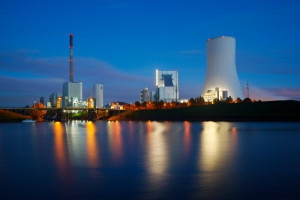New Report Suggests Serious Water Worries as States Strike Back at EPA Rule
 How safe is American water? The debate has been raging for years. The Environmental Protection Agency (EPA) says businesses aren’t doing enough to safeguard both small and large waterways, while companies and state lawmakers alike claim that the agency is overstepping its bounds. As noted by EP Online, a new report now argues that EPA numbers about water pollution are serious underestimates, even as multiple states line up to challenge the new Clean Water Rule. Bottom line? This is a murky situation at best.
How safe is American water? The debate has been raging for years. The Environmental Protection Agency (EPA) says businesses aren’t doing enough to safeguard both small and large waterways, while companies and state lawmakers alike claim that the agency is overstepping its bounds. As noted by EP Online, a new report now argues that EPA numbers about water pollution are serious underestimates, even as multiple states line up to challenge the new Clean Water Rule. Bottom line? This is a murky situation at best.
Cause for Concern
Water pollution comes from a number of sources, but power plants are often mentioned as large contributors. EP Online contends that plants are discharging more than 5.5 billion pounds of pollutants into American waterways every year. In Missouri, for example, The Sierra Club has filed an appeal with the state claiming that the Labadie power plant operated by Ameren in Franklin County doesn’t meet state and federal water quality standards and that it should be required to produce acceptable water samples by October 2017, six months ahead of state-mandated requirements.
It’s challenges like these which spurred the development of the EPA’s amendment to the Clean Water Act, the Clean Water Rule, which puts small waterways such as streams and wetlands under the pollution-control rules of the Act and would compel landowners and companies to obtain permits for any type of long-term use which could pose a risk to natural wild- or plant-life. Not surprisingly, the new rule has prompted significant pushback.
Against the Current?
According to The Hill, challenges from some states have already been successful. After 13 states signed a petition to block the new rule, a North Dakota judge issued an injunction temporarily blocking the rule’s implementation. The argument here is that compliance with new EPA regulations could cause significant economic harm to states—such as reducing spend on necessary programs to fund new permit regulations and issuance—and that the underlying state-sponsored lawsuit against the Clean Water Rule has merit and will likely succeed in court.
The EPA, meanwhile, interprets the courts’ decision to mean that any of the 13 states not named in the injunction are fair game and have started enforcing the rule along with the Department of the Army. The National Wildlife Federation believes the rule will survive any court challenge since “sound science, as required under the Clean Water Act, underpins the rule and will ensure that it is affirmed in the courts.”
Getting Clean
Although the fate of the EPA’s water rule isn’t certain, there’s no question that both state and federal agencies are taking a harder look at the effect of power plants and other large-scale operations on the quality of local water. And while it’s possible to fight city hall here and ignore the rule as something that will eventually disappear, companies may be better served by cleaning up their act with the rule still under debate rather than playing catch-up when this—or another stronger piece of legislation—makes it through the courts.
Best bet? Start from the top down. Deal with condenser tube scaling, cooling tower film, and other biohazards before they reach the water supply. Companies benefit from reduced cost to purify this water and save themselves the time and trouble of facing compliance challenges from the EPA.
Water worries are on the horizon as the EPA cracks down. Get ready with proactive power plant maintenance.
Next Steps:
- Subscribe to our blog to stay informed about the latest HVAC news and insight.
- Stay up to date on facility maintenance tools such as chiller tube cleaners, boiler tube cleaners, hose/pipe cleaners, descaler systems, industrial vacuums, commercial pressure washers, and drain cleaners.

